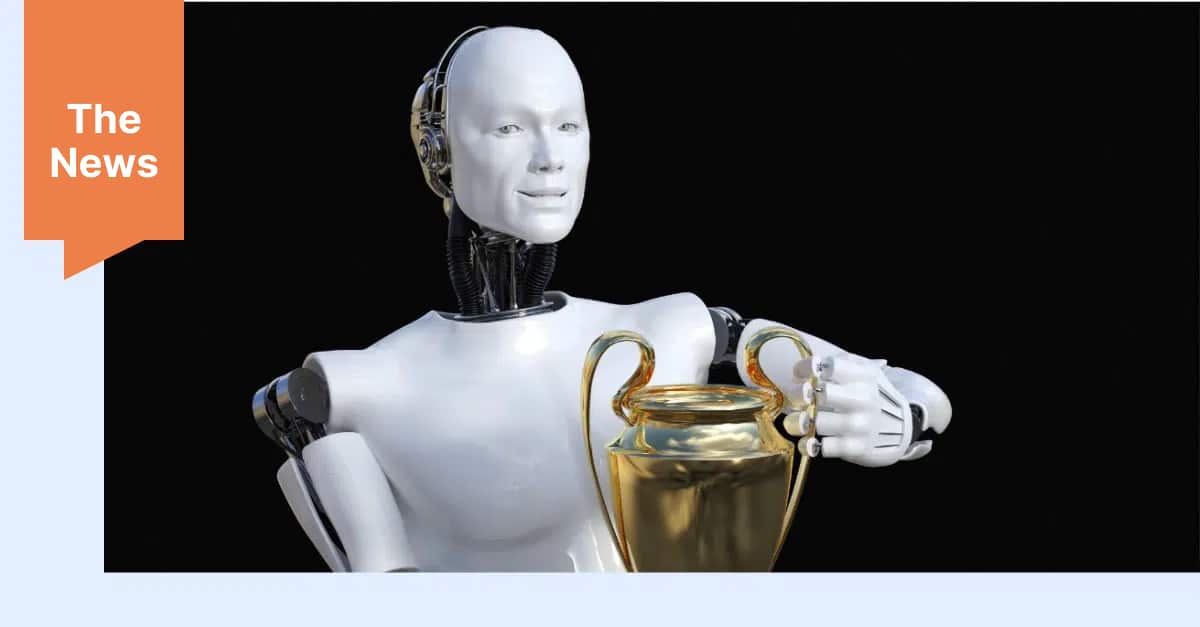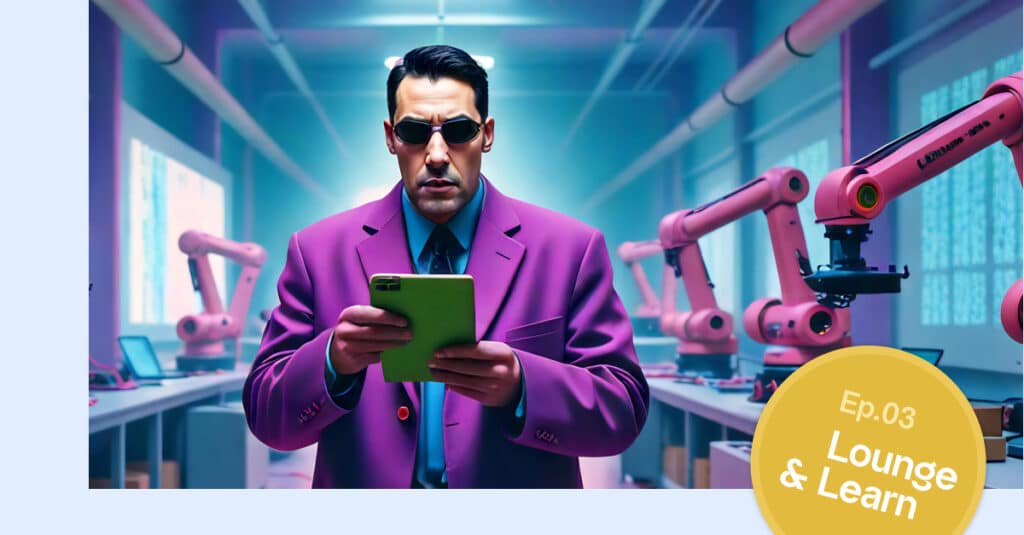
With uncertainties around climate and geopolitics, one thing is clear: AI is coming of age as it improves outcomes across industries and even wins two Nobel Prizes. What’s next? Will AI become Time magazine’s Person of the Year? … Read all about it in our regular round-up of manufacturing-related news.
It’s been a big year for AI. Last month, AI was validated by winning the Nobel Prizes for both Physics and Chemistry. Not so shabby for a bunch of zeros and ones.
A Certain Vigilance Might Be Called For
But yes, as vast as the promise, the rise of AI also comes with its own array of warning labels, as the bestselling historian Yuval Noah Harari ably communicates in his latest book, Nexus: A Brief History of Information Networks from the Stone Age to AI.
“At the heart of Nexus is the idea that networks – whether social, political, economic or technological – are the bedrock of human cooperation and power. Harari argues that the strength of human societies has always come from their ability to create and sustain networks of information. These, in turn, allow large-scale collaboration and the distribution of resources, knowledge and authority,” according to ‘Has AI Hacked The Operating System Of Human Civilisation? Yuval Noah Harari Sounds A Warning’.
However: “The networks that have served humanity so well in the past, enabling unprecedented levels of cooperation and progress, are now at risk of becoming too complex and opaque for humans to fully manage. AI, Harari warns, is not simply a tool that we use; it can make decisions and generate new knowledge independently. Its rise could fundamentally alter the structure of human society. This is why Harari argues for its regulation and control.” Fair enough.
“Nexus is ambitious, bold and at times, unsettling. It does not offer solutions that are easily within our grasp. But it challenges readers to think critically about what governs our lives and the ways AI could transform them.” Again, fair enough.
To be clear: while Harari recommends vigilance, he also believes: “Obviously, AI also has enormous positive potential.”
“Business technology leaders are winding down two years of fast-paced artificial intelligence experiments inside their companies, and putting their AI dollars toward proven projects focused on return on investment.”
The Holiday is Over: ROI Over Experimentation
Indeed, in the real world, more established forms of AI are ably dealing with very specific problems – whether it’s CuspAI creating materials-on-demand that can be deployed for cheap carbon capture or Every Cure repurposing existing drugs to treat currently untreatable diseases.
In terms of manufacturing, even GenAI has found some use cases that seem viable for the short term, whether using the preferred language of frontline workers or collating documentation and training in a single interface, according to ‘Five GenAI-Enabled Low-Code Industrial Analytics Use Cases Firms Can Get Started With Today’.
And it’s about time: the AI holiday is over. It’s time to get down to business…
“Business technology leaders are winding down two years of fast-paced artificial intelligence experiments inside their companies, and putting their AI dollars toward proven projects focused on return on investment,” according to ‘Companies Had Fun Experimenting With AI. Now They Have to Show the Returns’.
“When generative AI came along, there was a certain amount of discretionary funding that we could look at to go experiment and test out some of the technology,” says one CTO.
“This is a year where you have to be expecting business results,” says another.
“The problem is, roughly 70% of business customers’ generative AI projects are still stuck in pilot or testing phase.”
“Accuracy and reliability is a big problem.”
“To get over the experimentation hump, businesses need to ensure there is widespread access to corporate data so that technology builders can use it to implement AI […] That’s how you get to the workable prototype that you know is fit for purpose, that you know will move the needle on the business.”
“One way to tell if the needle has moved: AI-based tools must be able to prove their worth in less than 12 months.”
“Another option: breaking down AI initiatives into smaller chunks that are more easily proven out.”
“I’m quite happy that it’s not a magic wand. We understand that it really is a useful, powerful tool, but it fits into the broader ecosystem.”
“… has helped shrink the process of taking a new model of a regular vehicle from conception to mass production from around five years to about two.”
Stimulating Simulations
In manufacturing and AI, we hear a lot about “digital twins,” which is a fancy way of saying “running simulations.”
“When a factory has secrets to protect it is not unusual for security staff to ask that no photos be taken. This industrial campus in Milton Keynes, northwest of London, however, is particularly cautious. It is the home of Oracle Red Bull Racing, a Formula 1 team involved in a competitive contest that relies on levels of engineering so advanced they would leave most manufacturers in the dust,” according to ‘Digital Twins Are Speeding Up Manufacturing’.
“The digitization of car design and the virtual testing of prototype vehicles in a simulator has helped shrink the process of taking a new model of a regular vehicle from conception to mass production from around five years to about two. […] Carmakers are now trying to create digital twins of their factories and supply chains to plan production more efficiently. As the volume of data grows, AI will help analyze the twins and suggest improvements.”
“Spotting problems before they occur has both safety and financial benefits. It also makes routine servicing more effective. Aircraft used to require their engines be serviced at set intervals, even though some journeys cause more wear and tear than others. Planes flying out of an airport in a desert region, like the Middle East, can ingest gritty dust particles, which abrade components faster. Certain flights are more heavily laden, which adds stress. And some pilots push the throttles harder than others.”
“As the digital twin takes such things into account, maintenance schedules can be tailored to how each engine is actually wearing. This means some engines can stay on the wing as much as 30% longer.”
“He said the 15 years of experience traditionally required for a human to handle a complex role can be accomplished at the same level by someone with five years of experience working with two AI co-pilots.”
But It’s Not Just About Productivity, It’s About People
“Honeywell CEO Vimal Kapur said at the recent CNBC Evolve: AI Opportunity Summit that he expects AI to be a much bigger growth driver than a productivity fix for the industrial company. That’s because of a generational shortage in skilled labor and the ability of AI copilots to reduce the time it takes for newer employees to become experts at their jobs,” according to ‘Why Honeywell CEO Vimal Kapur Doesn’t Think The AI Payoff Will Come From Productivity’.
“The AI opportunity for Honeywell is creating a new labor pool that can learn and work alongside AI and accumulate and deploy institutional knowledge much faster. He said the 15 years of experience traditionally required for a human to handle a complex role can be accomplished at the same level by someone with five years of experience working with two AI co-pilots.”
“For all the debate about how quickly AI opportunities will materialize, Honeywell’s Kapur is bullish on the adoption curve steepening quickly. ‘Awareness is high, adoption is low, but there will be an inflection point,’ he said. ‘I do believe 2025-2026 will be a big year for adoption of AI in the context of industrials.’”
So, here’s a thought: perhaps Time should name early AI adopters as their Persons of the Year.
Read last month’s Manufacturing – The News: ‘What Happens After The November Ballot?’.




